Pata Hamonado with fork-tender pork leg and a sweet and savory pineapple sauce is sure to be a family favorite. Serve with steamed rice for the ultimate comfort food!
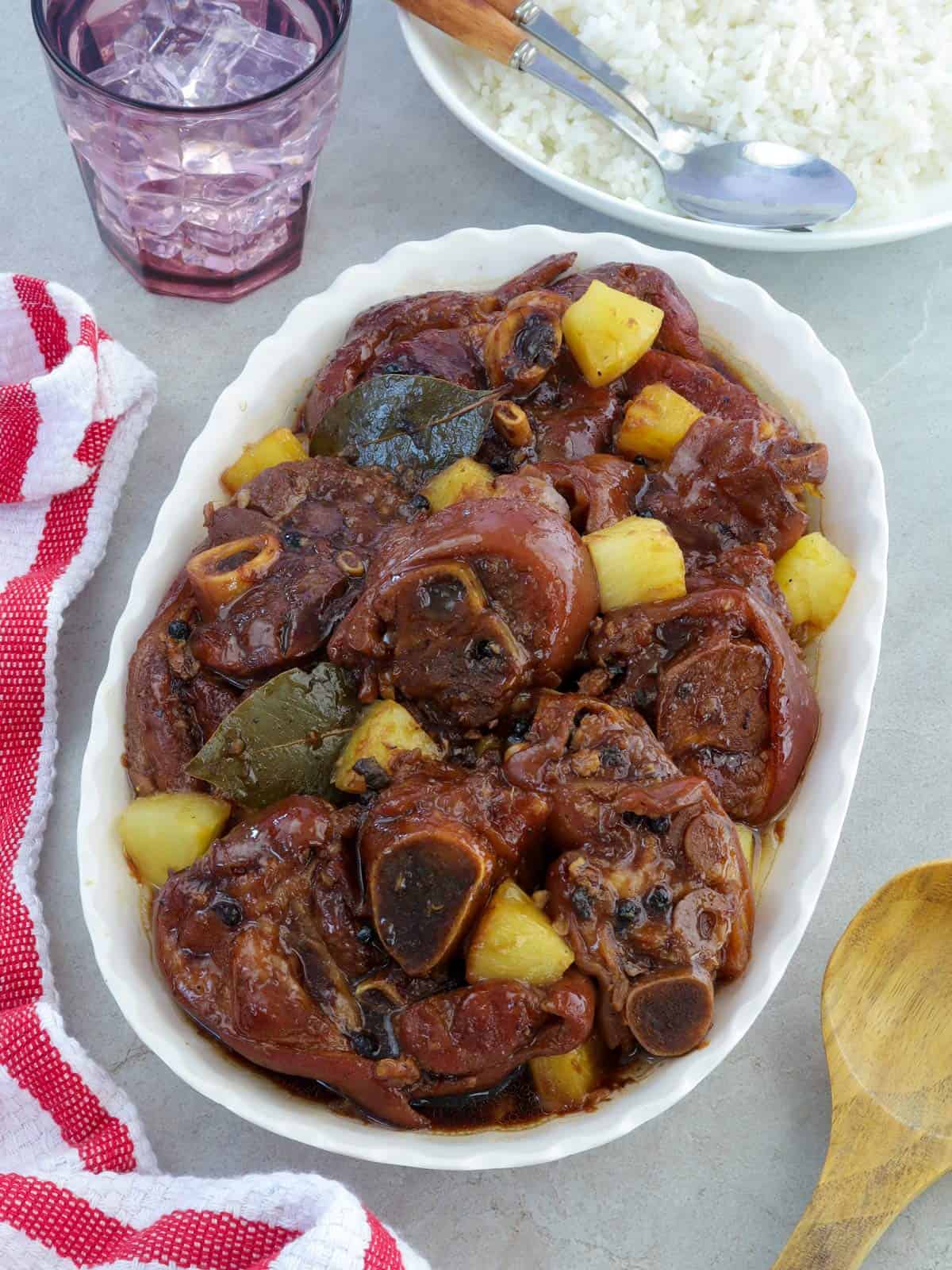
I first published this pata hamonado in 2014 and am updating it today with new photos and tips. If you prefer pork belly instead of pork leg, check out this pork hamonado version. The procedure is the same; the only change would be the cooking time, as we're using a different cut of meat.
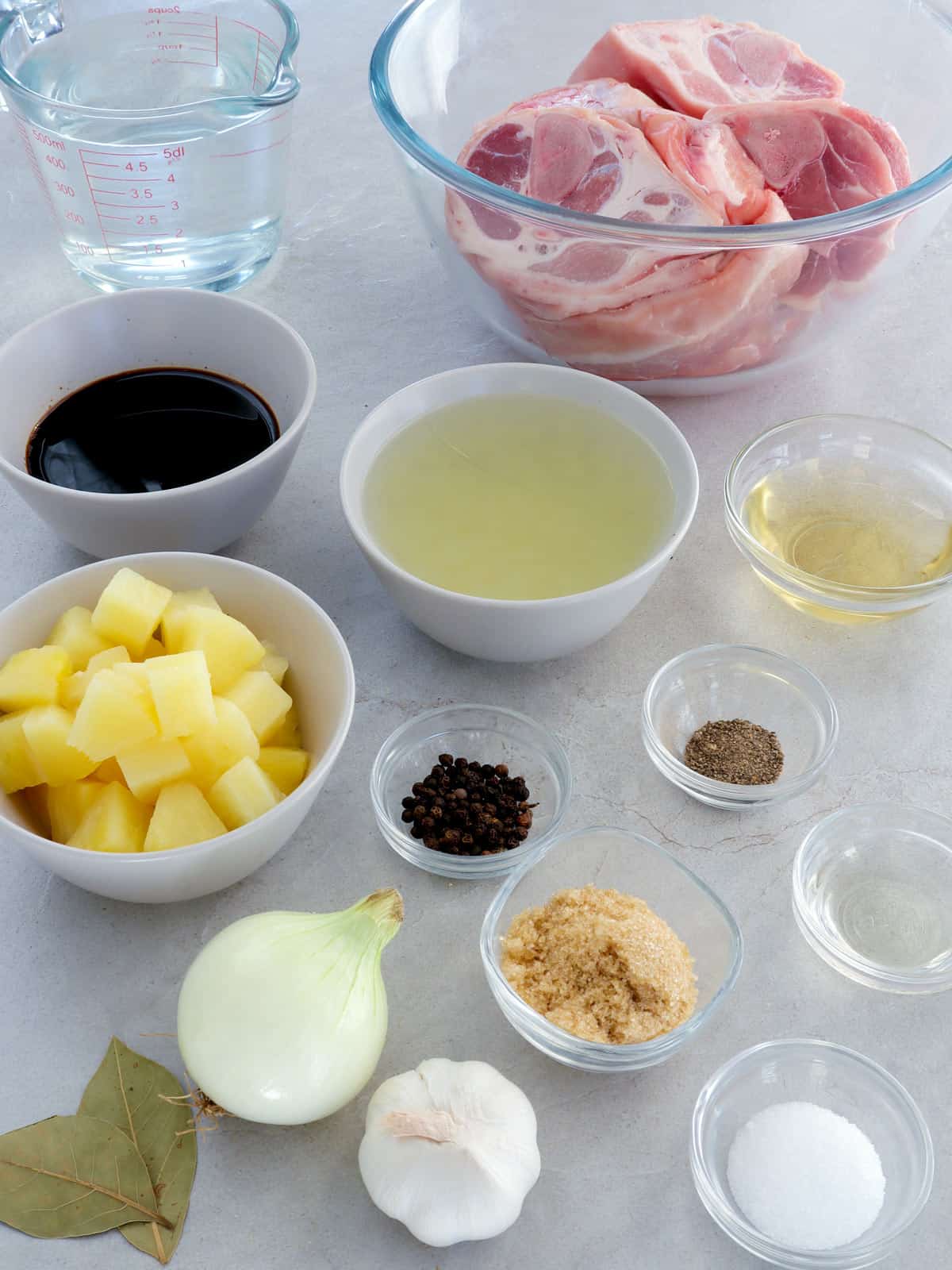
What is Hamonado
Hamonado refers to a type of Filipino cooking where meat is marinated or cooked with pineapple. Fatty pork, chicken, or beef cuts are first seared in hot oil until lightly browned and then braised in pineapple juice along with soy sauce, brown sugar, and aromatics such as onions, garlic, and peppercorns to round off flavors.
Other regional versions of the dish may also include tomato sauce, banana ketchup, raisins, carrots, and/or hot dogs.
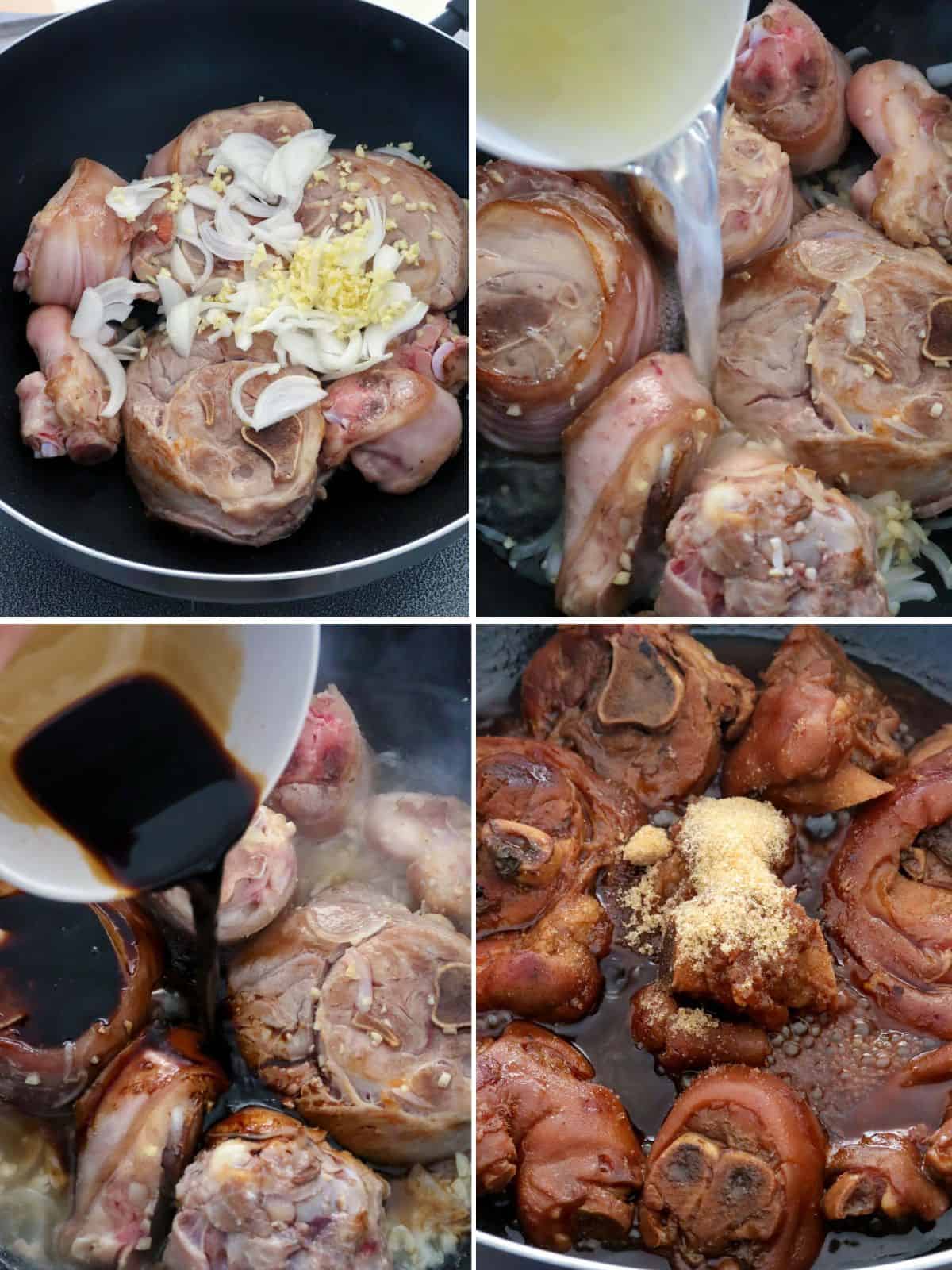
Ingredient notes
- Pork- you can use whole pork leg for better presentation, but to speed up cooking time, I suggest having the butcher cut the meat into about 2-inch thickness.
- Pineapples- as the liquid in the can is what's used to braise the meat, make sure the pineapple chunks are packed in juice and not heavy syrup, which is too sweet and lacks the sour notes needed to balance the sweet and salty flavors.
- Vinegar- add about ¼ cup of apple cider vinegar to boost the tanginess of the pineapple juice; let boil uncovered and without stirring to mellow out the acid taste. You can substitute palm vinegar.
- Sugar- preferably use brown sugar, and not white, as it has a slightly less concentrated sweetness and contains molasses, enhancing the hamonado sauce's rich flavor.
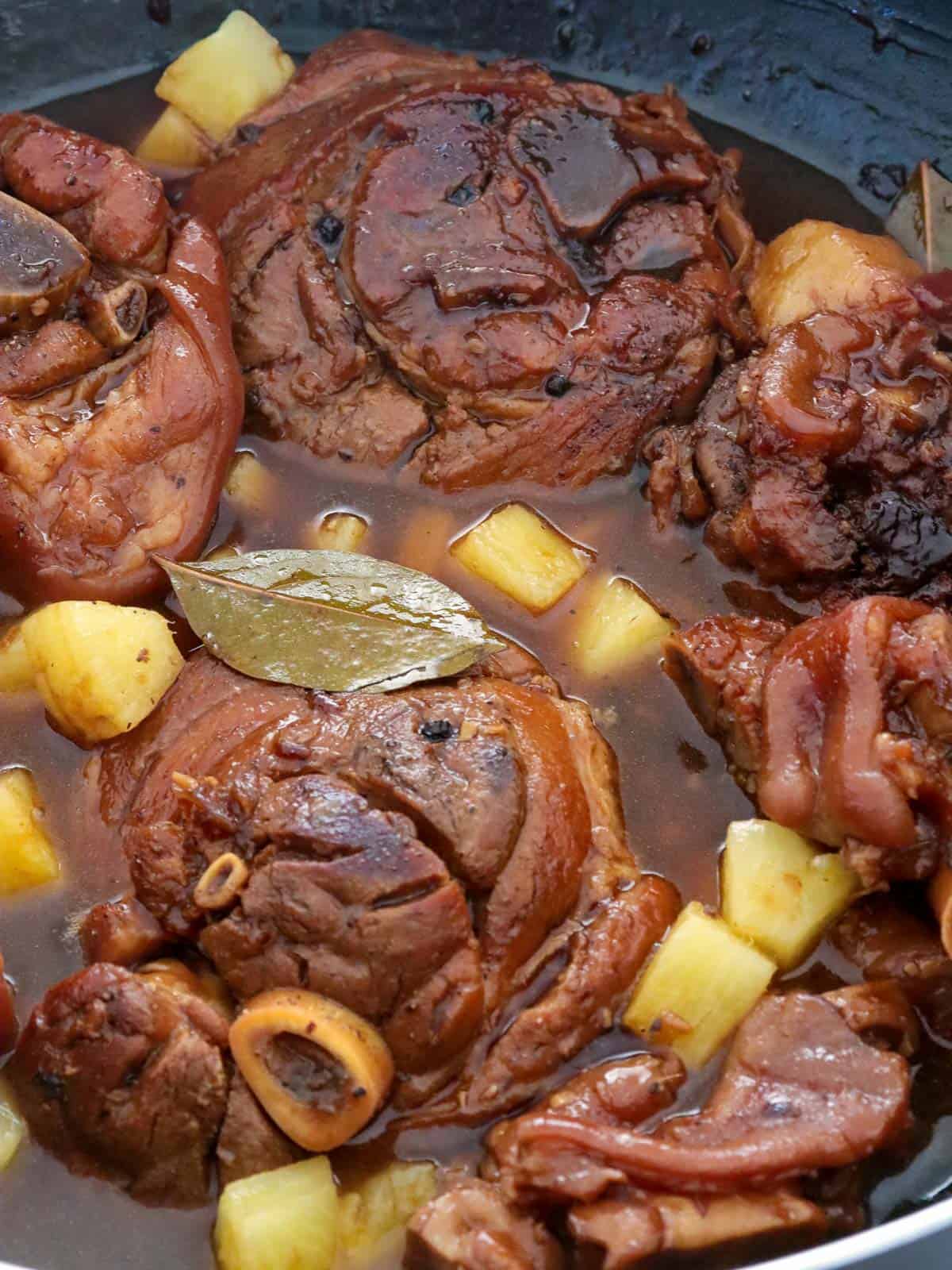
Tips for best results
- Don't skip browning the pork. Searing over high heat caramelizes the surface of the meat and adds incredible flavor.
- Don't cover and stir for a few minutes when boiling the vinegar to cook off the strong acid taste.
- Don't rush. Cook low and slow to allow the fat to render and the tough, connective tissues to soften to melt-in-your-mouth tenderness.
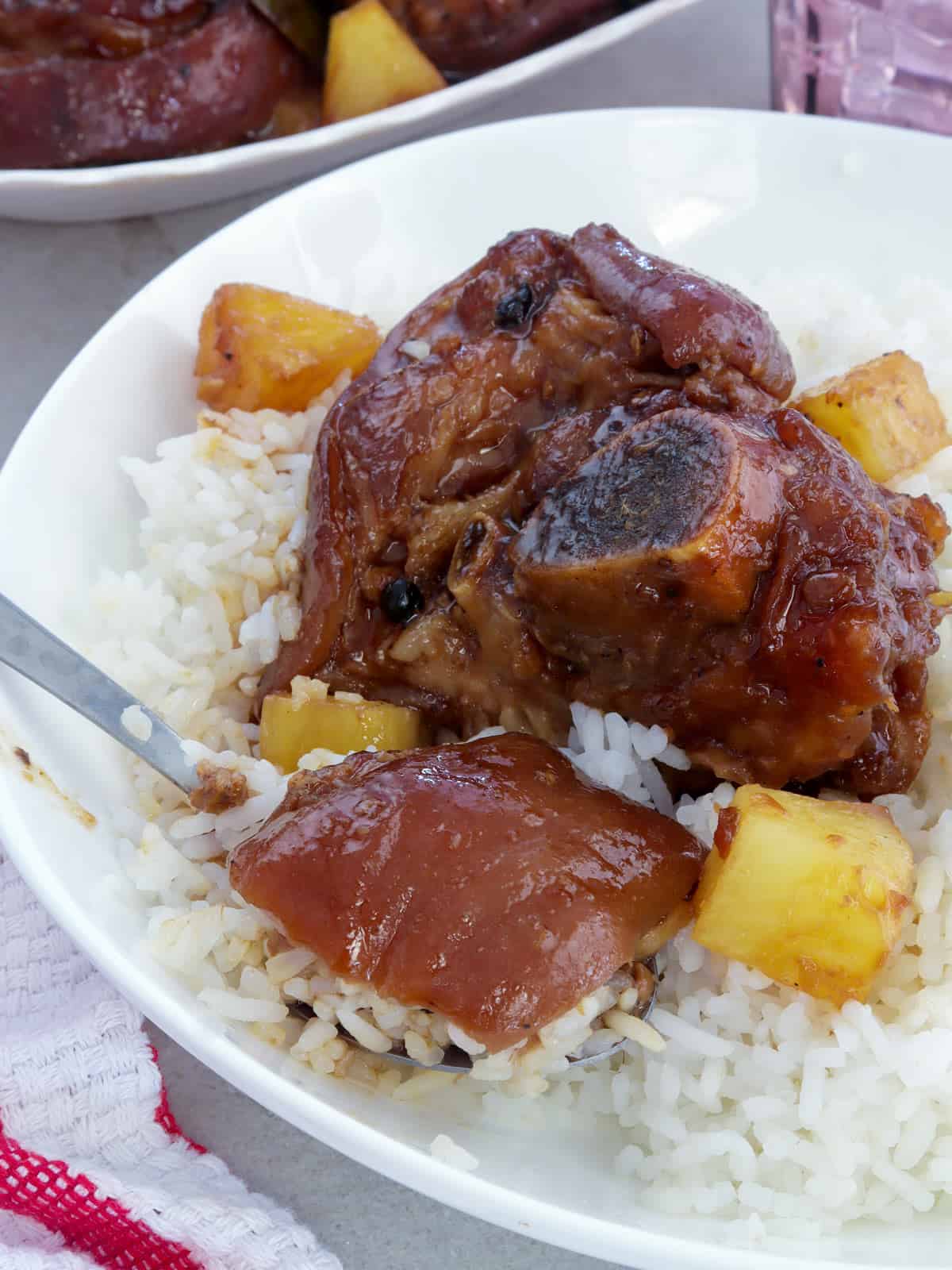
Serving suggestions
Give this hamonado recipe a try for dinner tonight. It's not exactly waist-friendly, what with its thick caps of pork skin and fat but that rich sweet, tangy, and savory sauce alone drizzled on piping-hot steamed rice is worth the fat pants.
Serve with steamed rice for a hearty and delicious meal that's sure to hit the spot!
Storage and reheating instructions
- Store in a container with a tight-fitting lid and refrigerate for up to 3 days or freeze for up to 2 months.
- Due to high collagen from the pork skin, the sauce will congeal when cold.
- Reheat in a saucepan over medium heat to 165 F or microwave at 2 to 3-minute intervals, stirring well between intervals to distribute heat.
Ingredients
- 1 tablespoon canola oil
- 1 (about 3 pounds) whole pork leg, cut into 2-inch thick pieces
- 1 onion, peeled and sliced thinly
- 4 cloves garlic, peeled and minced
- 1 cup pineapple juice
- ¼ cup apple cider vinegar
- 2 cups water
- ½ cup soy sauce
- 1 teaspoon peppercorns
- 2 bay leaves
- 2 tablespoons brown sugar
- salt and pepper to taste
- 1 cup Pineapple chunks
Instructions
- In a wide, heavy-bottomed pan over medium-high heat, heat oil.
- Add pork in a single layer and cook for about 2 to 3 minutes or until lightly browned. Turn and cook for another 1 to 2 minutes or until all sides are lightly browned.
- Add onions and garlic and cook, stirring frequently, until softened.
- Add pineapple juice and vinegar. Allow to boil, uncovered and without stirring, for about 2 to 4 minutes.
- Add soy sauce, water, peppercorns, and bay leaves. Stir to distribute and bring to a boil, skimming scum that floats on top.
- Lower heat, cover and simmer for about 1 ½ to 2 hours or until pork is very tender and liquid is reduced.
- Add brown sugar and stir until dissolved. Season with salt and pepper to taste.
- Add pineapple chunks and stir to combine. Serve hot.
Notes
- Don't skip browning the pork. Searing over high heat caramelizes the surface of the meat and adds incredible flavor.
- Don't rush. Cook low and slow to allow the fat to render and the tough, connective tissues to soften to melt-in-your-mouth tenderness.
Video

Nutrition Information
“This website provides approximate nutrition information for convenience and as a courtesy only. Nutrition data is gathered primarily from the USDA Food Composition Database, whenever available, or otherwise other online calculators.”

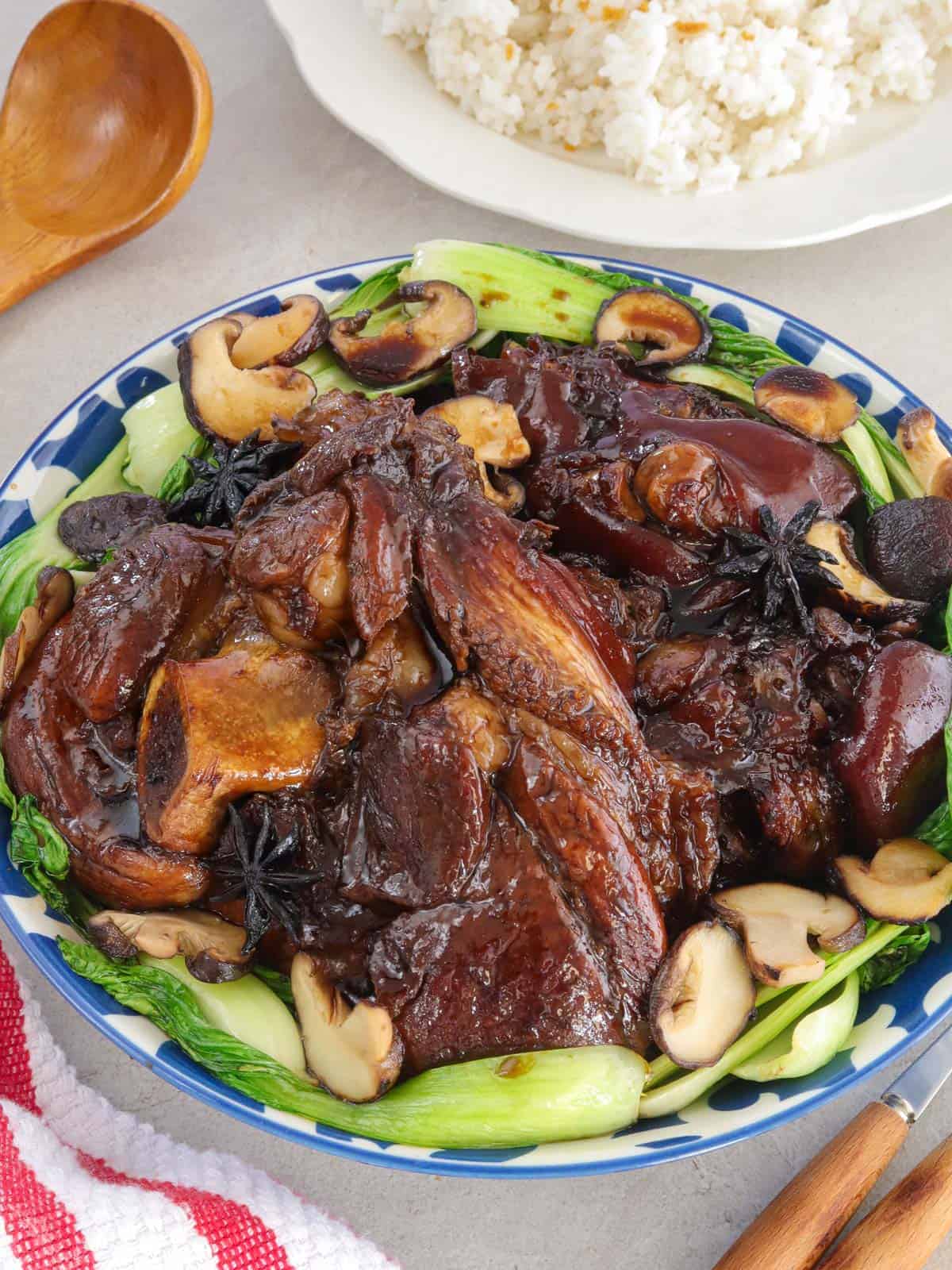
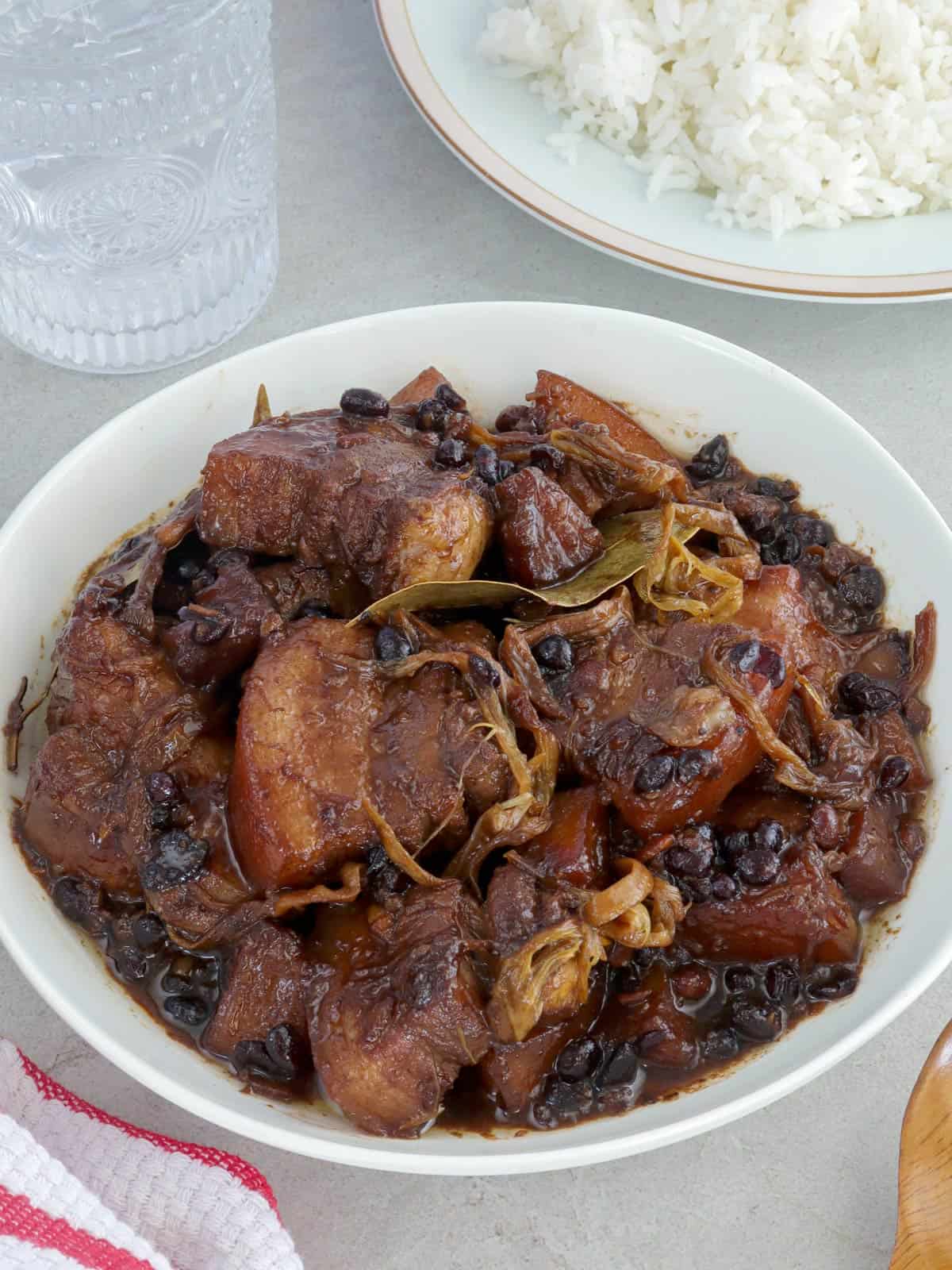
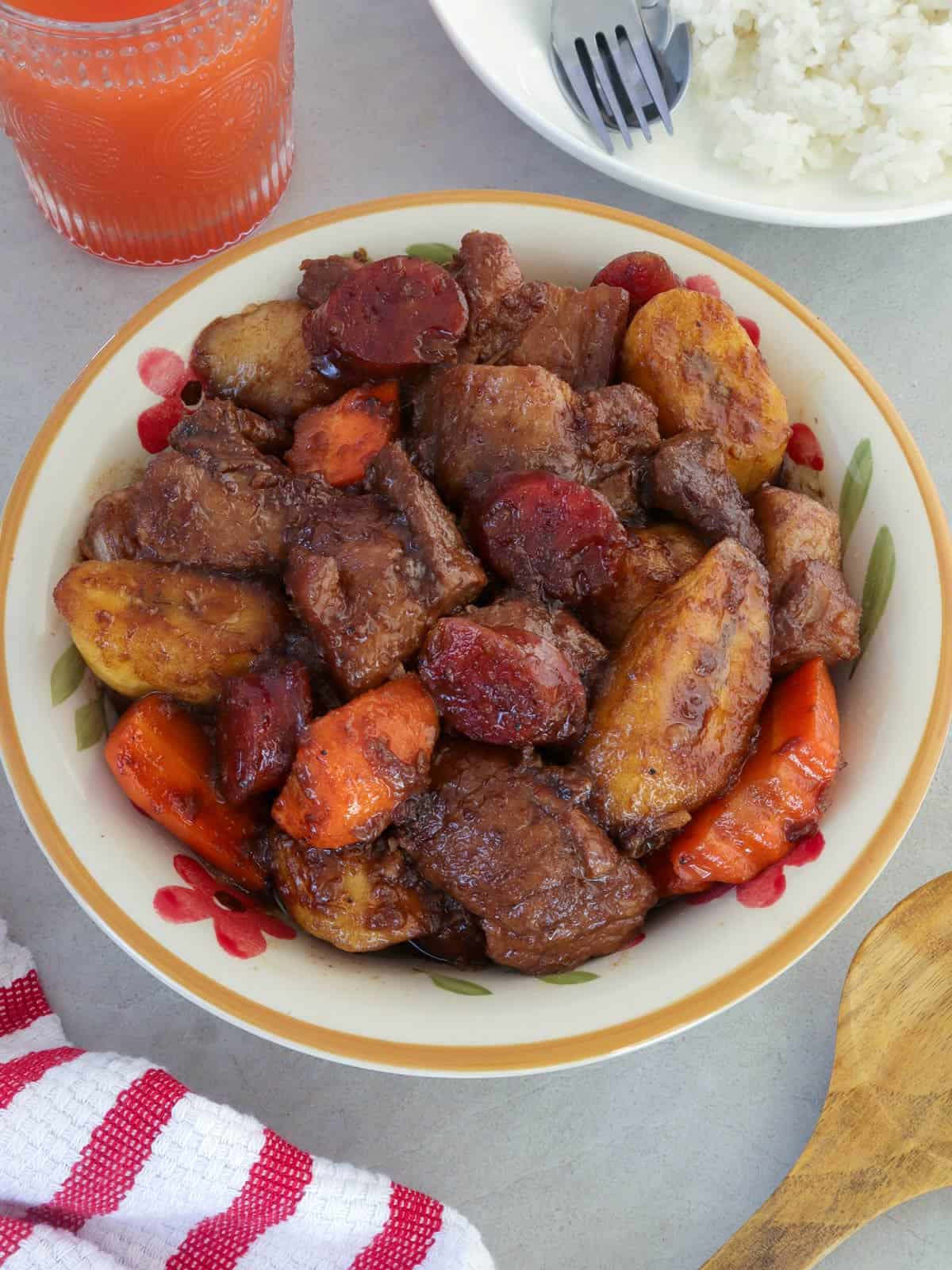
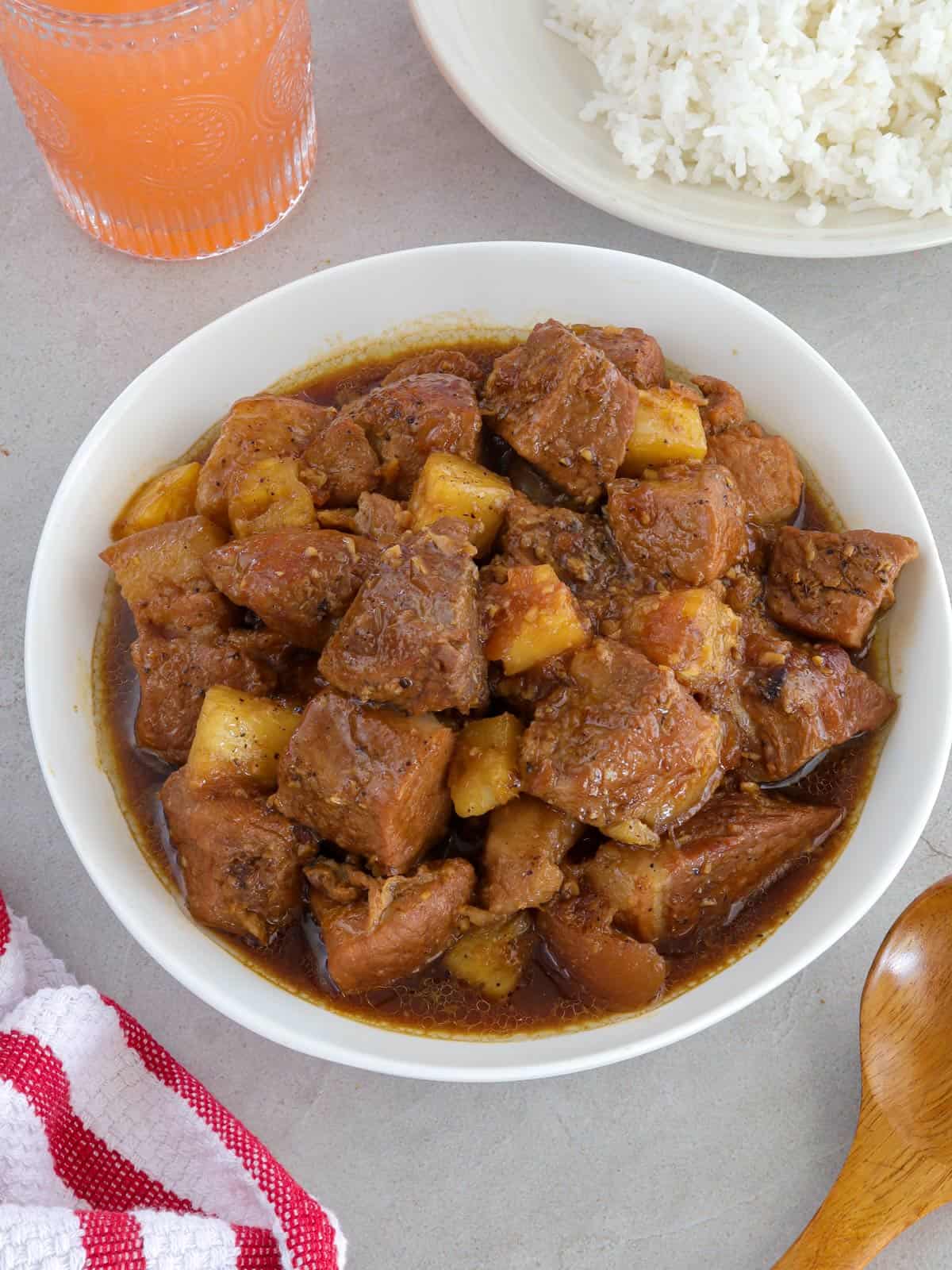
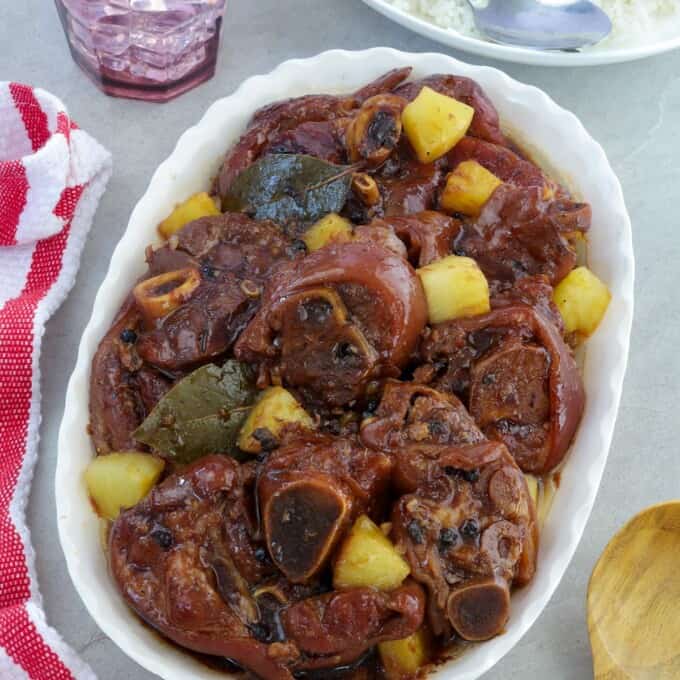
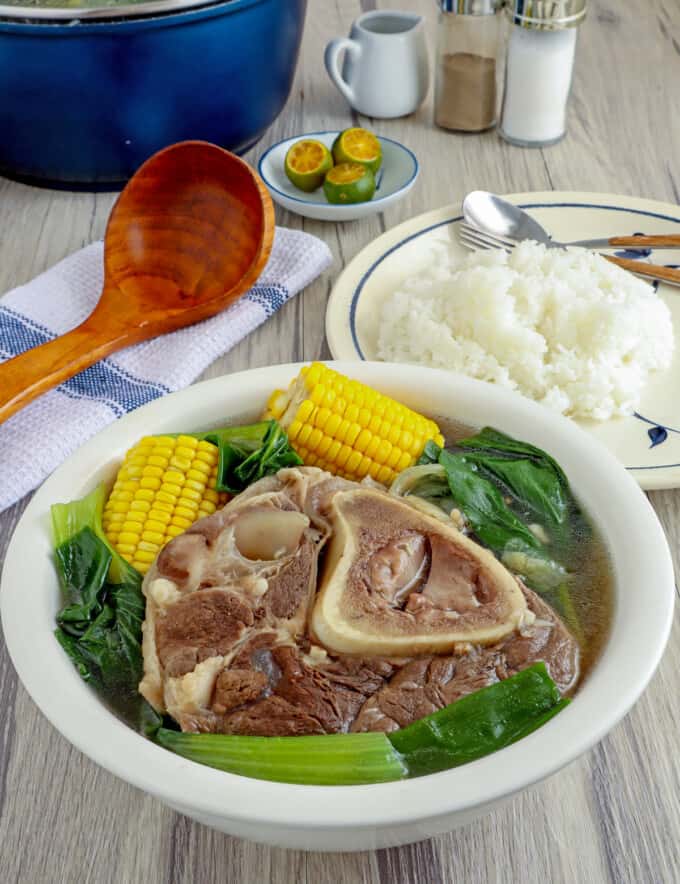
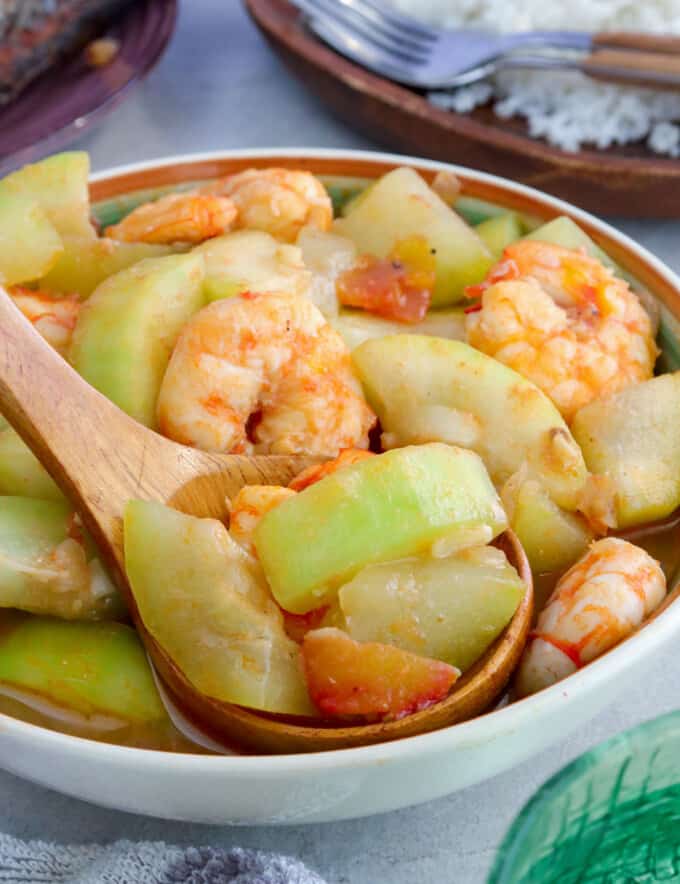
Migz says
I used 3 cups of pineapple juice and 1 cup of water instead for a sweeter taste this recipe is solid thank you! taste just like my moms cooking
Lalaine Manalo says
I'm glad you were able to adjust the recipe to your liking!